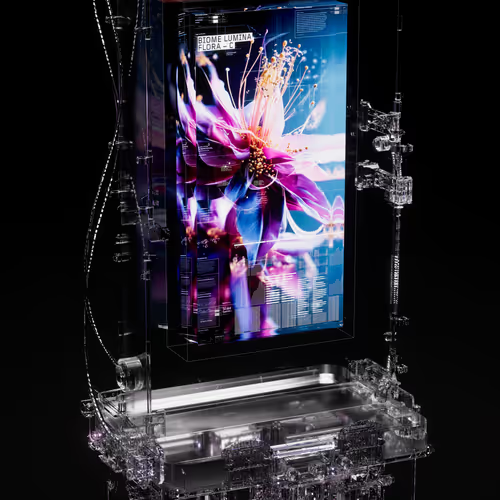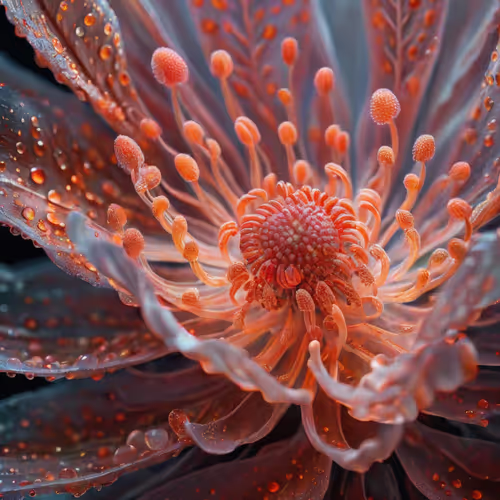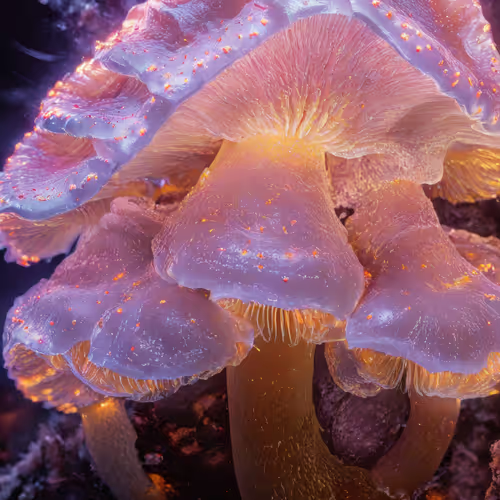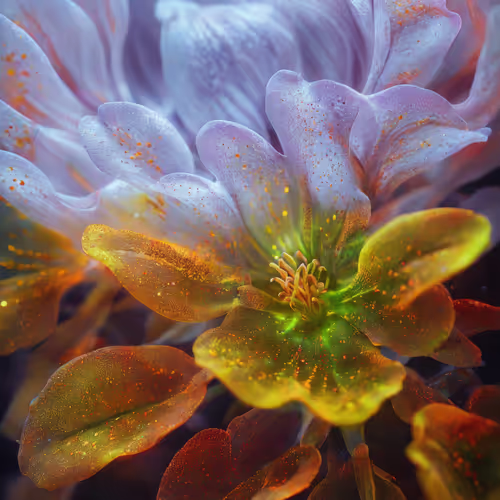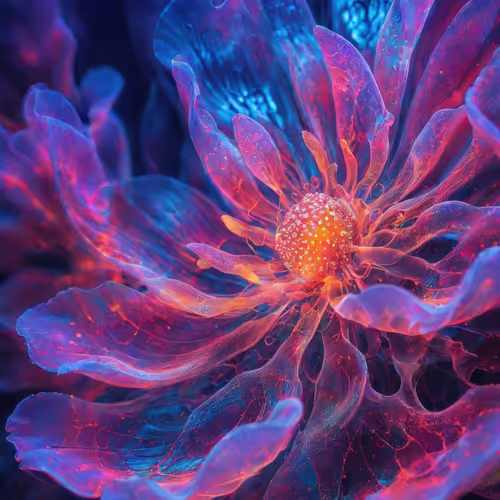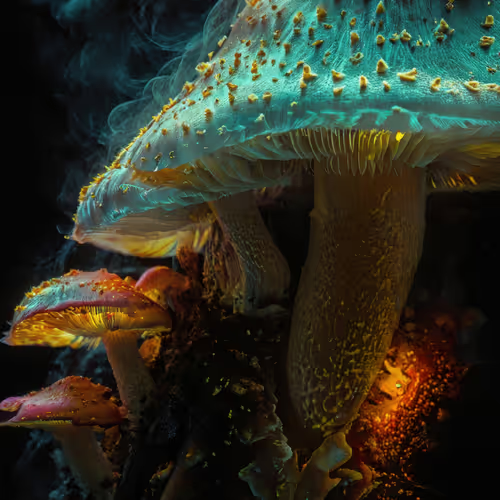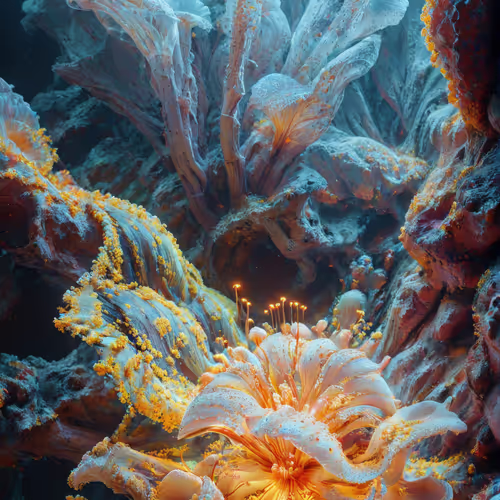Luminifungus Borealis, named from Latin for light and mushroom, with 'Borealis' indicating its northern temperate habitat, is a bioluminescent fungal species in the Crepuscular Luminae cluster. It features complex, branching fruiting bodies with fused leafy cap margins, lacking a singular cap. Coloration ranges from soft whites to magentas and deep purples, highlighting veined gills on branching stipes. Pale, translucent stems show pink speckling, with fruiting bodies 0–15 cm tall. Bioluminescence emits blue-green light (420–490 nm) via a luciferin-luciferase system on undersurfaces, creating a gentle glow that attracts nocturnal vectors for spore dispersal. Native to temperate forest understories (0–10°C), it grows saprotrophically on decaying wood and leaf litter. Classified in Basidiomycota, it uses passive spore release aided by bioluminescence and airflow. Its extensive mycelium facilitates nutrient recycling, contributing to ecosystem biodiversity and illuminating fungal bioluminescence mechanisms.
